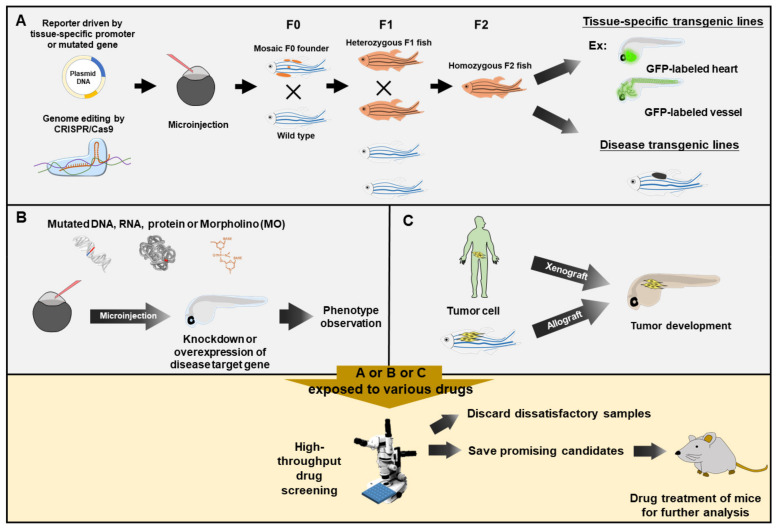Figure 1 Zebrafish served as a rapid means for phenotype-based high-throughput drug screening. Zebrafish embryos exposed to various drugs for drug screening would be obtained from three approaches. (A) Embryos from tissue-specific transgenic lines and disease-like transgenic lines. The DNA constructs, as indicated, are microinjected into one-cell fertilized eggs, followed by selection and breeding to heterozygous or homozygous transgenic strains. (B) Embryos with knockdown or overexpression of a specific gene. The mutated DNA, mRNA, protein or antisense oligonucleotide Morpholino (MO) is injected into the zebrafish embryos for knockdown or overexpression of disease target gene, followed by transient phenotypic observation. (C) Embryos after transplantation. Cancer cells from human (Xenograft) or zebrafish (allograft) are transplanted into zebrafish embryos, resulting in tumor development. Zebrafish embryos obtained from (A), (B) or (C) are employed to perform high-throughput drug screening via exposure to various tested drugs by using automated quantitative analysis and phenotypic scoring in multiple plates. After preliminary high-throughput rapidly screening, researchers could rule out most negative candidates and only save the most promising candidates for further validation on the mammalian system.
Image
Figure Caption
Acknowledgments
This image is the copyrighted work of the attributed author or publisher, and
ZFIN has permission only to display this image to its users.
Additional permissions should be obtained from the applicable author or publisher of the image.
Full text @ Pharmaceuticals (Basel)

